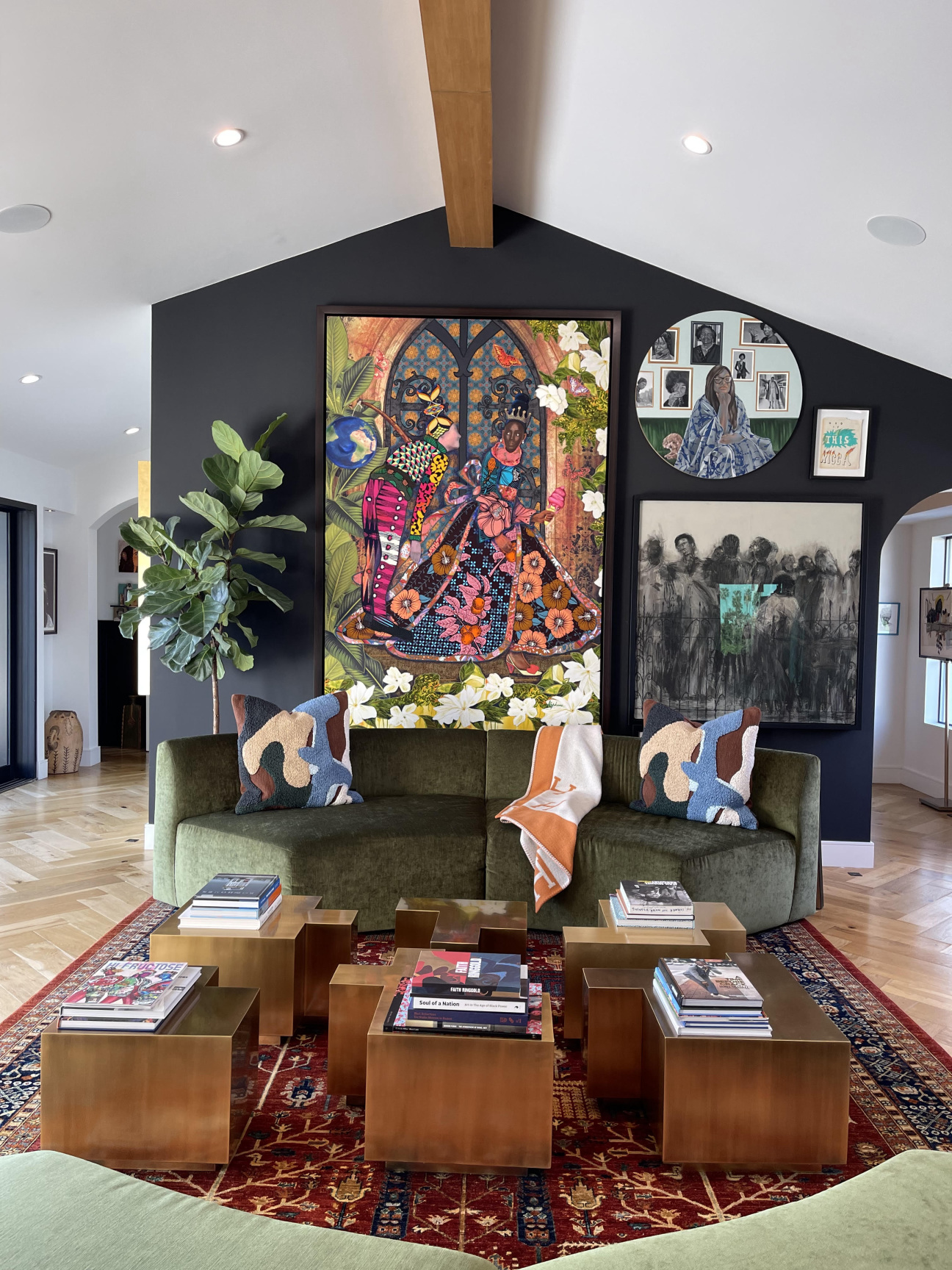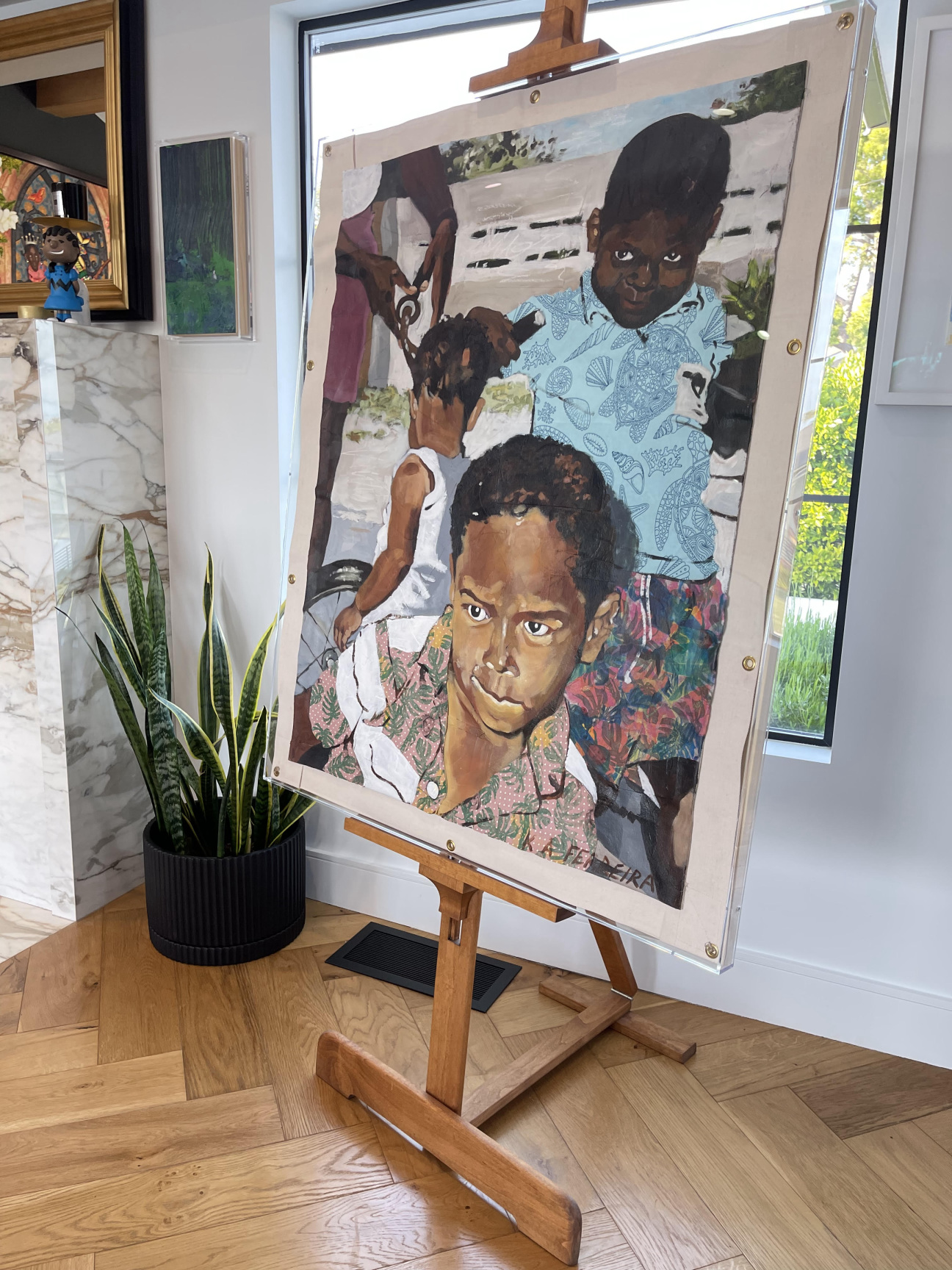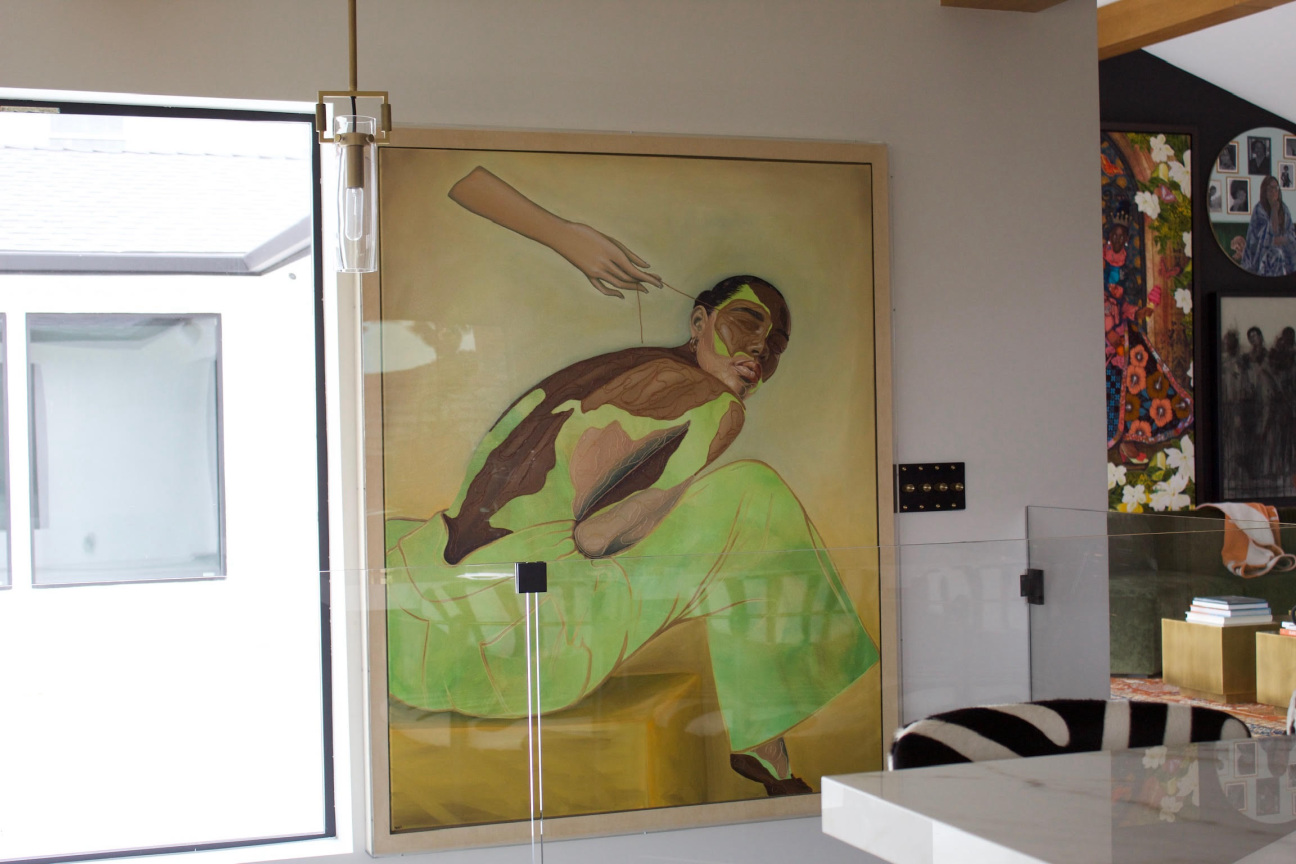
CULTURED: What do you think makes the Los Angeles art scene distinct?
Ayesha Selden: What has been pleasantly surprising to me, coming from my hometown of Philadelphia, is the abundance of serious Black art collectors in LA. I’ve been able to build a community of collector peers here that share ideas, new artists, and curators.
CULTURED: Where does the story of your personal collection begin?
Selden: Have I mentioned community in the Black art space already? Because that’s where my story starts. I’d recently built my home in the View Park section of LA, and I knew I wanted to fill it with art from artists of the African diaspora. A few years ago, I’d reached out to a friend, Tony O. Lawson, who runs an online media company, Shoppe Black, and asked him who he knew in the art world that could point me in the right direction. He connected me to a London-based collector, Freda Isingoma, and the hour or so of her time that she invested in me was invaluable. From there, I linked with a designer I knew from social media, Cassandre Bonhomme, and she recommended a few artists for me to check out. One of them was b. Robert Moore, whose “Out the Mud” series resonated with me. I purchased my very first piece of art from him.

CULTURED: How would you describe your collection?
Selden: My collection tells me stories. To date, I’ve mostly collected contemporary, figurative works that tell the story of Black people—mostly in America. Recently, my tastes are changing a bit because I have a lot of faces on my walls. I’ve added some pieces from Latinx and Southeast Asian artists. I’ve also developed a new appreciation for abstract works, which I liken to instrumental jazz music—you don’t always need lyrics to feel the music. Same with art. I can feel the colors and lines in a way I wasn’t able to appreciate years ago.
CULTURED: Which works provokes the most conversation from visitors?
Selden: Okay, I need three here. A commissioned portrait of me that Robert Peterson recently completely gets a lot of conversation—it shows me on a couch with painted photos of some of the courageous women that have inspired me along the way. The other is a Kareem-Anthony Ferreira work that has such amazing texture and detail. Also, Rugiyatou Ylva Jallow’s work sits at the top of my staircase and stops people in their tracks. Her paintings tell the story of a mixed race woman, and her use of thread throughout her paintings is spectacular.

CULTURED: How do you discover new artists and/or work?
Selden: Someone needs to take my phone because I am constantly looking for new artists. Is addiction to art a thing? Is there a support group I can join? I find artists through Instagram, Artnet, Artsy, fairs I attend around the world, global auctions, art advisors, galleries I frequent, museums, talking to my collector peers and mentors, international group chats with collectors. It’s a way of life, if you will.
CULTURED: Which artist are you currently most excited about and why?
Selden: I’m obsessed with Esther Mahlangu, a South African geometrical abstract artist, who paints designs used in the Ndebele tribe. I just purchased my fourth work of hers. Also, Austin Uzor, whose figurative abstract work you really need to see in person to fully grasp. It is stunning.

CULTURED: What factors do you consider when expanding your collection?
Selden: Can we talk about how the “factors” sometimes consider us though? Expanding our collection is sometimes limited by our reach and access. I’ve heard some pretty wild things from galleries as a Black collector. There are plenty of works I want and would like to buy, but as a Black collector, I often get a bit disappointed when I see how we are not given access like our white counterparts. Fortunately, this is not always the case, but baby…
CULTURED: What was the most challenging piece in your personal collection to acquire?
Selden: Phyllis Stephens is a fifth generation quilt maker, and there was a large scale quilt work that was originally “sold” when I originally asked about it. I happened to be at a fair sitting with Richard Beavers, the gallery owner, when the sale fell through, and he looked at me and said, “Do you want it?”

CULTURED: How has your collection changed as your home and space has changed?
Selden: As a relatively new but extremely active collector, one of my largest challenges is wall space. When I built my house, I thought I wanted a ton of windows for natural sunlight and views. Now, I find myself covering windows with art bearing easels because where else am I going to otherwise fit these wonderful stories?
CULTURED: What feelings would you like your collection to inspire in the people who experience it?
Selden: Nina Simone, in an interview, once said, “An artist’s duty as far as I’m concerned, is to reflect the times. I think that is true of our painters, sculptors, poets, musicians…” I want my collection to tell the Black experience. Our pain, our joy, our strength, our struggles, our resilience, our beauty, our love, and our community.










 in your life?
in your life?

